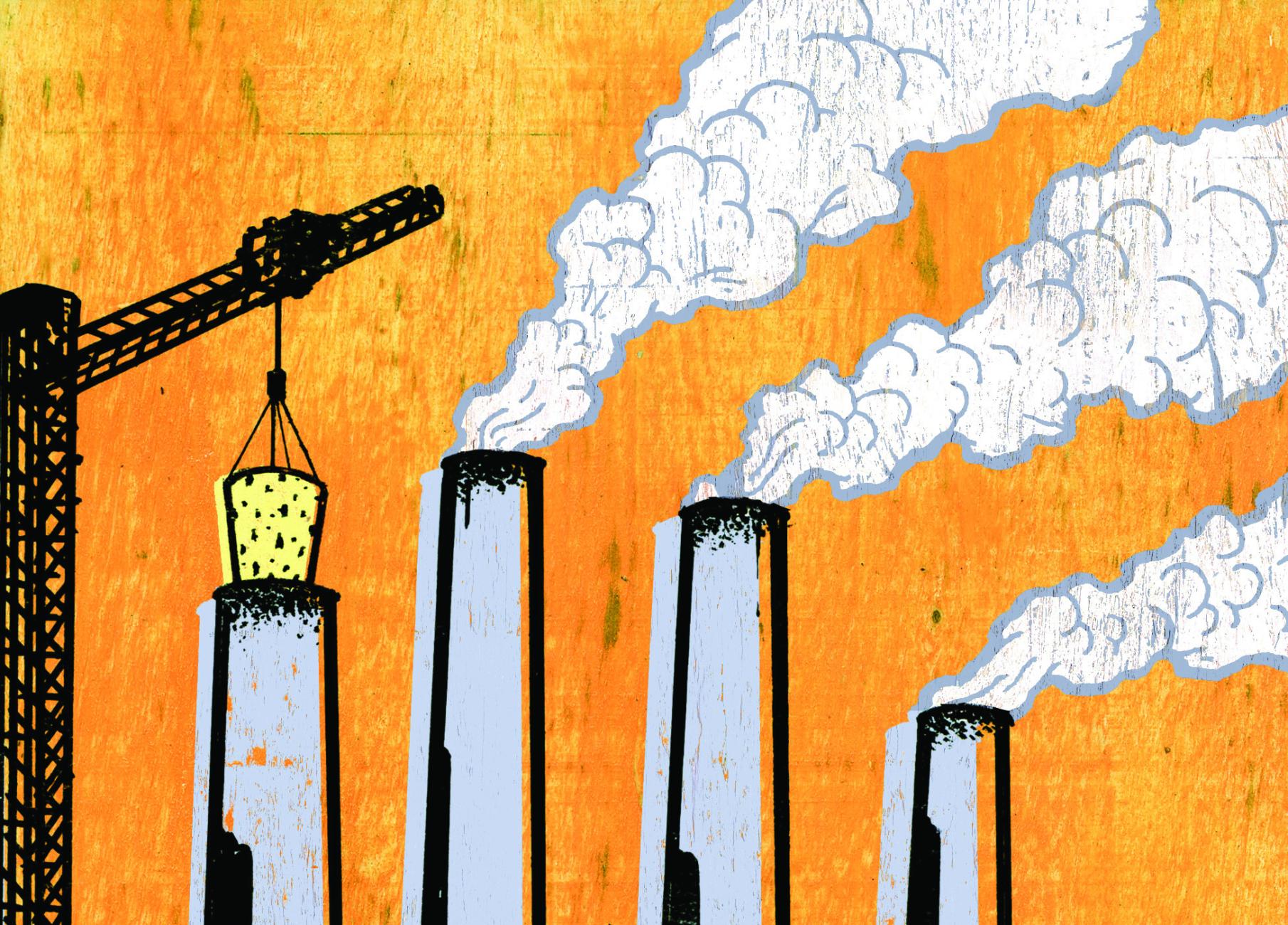
The Climate Vault banks on cap-and-trade markets to curtail carbon emissions.
A decade ago, the idea of planting trees to compensate for greenhouse gas emissions was all the rage. The notion had intuitive appeal: companies and organizations seeking to offset their carbon emissions would pledge to plant trees, which sequester carbon. But, as always, the devil was in the details. It was difficult to verify that the promised trees actually got planted, and there was no guarantee they wouldn’t be cut down later.
Michael Greenstone, LAB’87, began wondering if there was a better way to offset emissions. In particular, Greenstone—the Milton Friedman Distinguished Service Professor in the Kenneth C. Griffin Department of Economics, the College, and the Harris School of Public Policy—had his eye on government-regulated cap-and-trade carbon markets. Several countries and US states use these systems to establish both a limit and a price on CO2 emissions. The details vary from place to place, but generally, large-scale industrial emitters are required to purchase CO2 permits from a carefully monitored marketplace; the permits can also be bought and sold by other interested parties.
Greenstone saw an opening: “What if you just went into those markets [and] outbid polluters for the right to pollute?” In other words, you could buy a permit and keep it, effectively preventing that metric ton of carbon from ever reaching the atmosphere.
With his friend Andrew Dailey, a cofounder and managing director of MGI Research, Greenstone decided in 2020 to make the long-simmering idea a reality. Together, they recruited two more cofounders—UChicago trustee Donald R. Wilson Jr., AB’88, founder of the trading firm DRW, and Bala Srinivasan, SM’91, PhD’95, DRW’s global head of business development—and dubbed their new nonprofit Climate Vault. The organization works with a variety of institutions, including companies, universities, and other nonprofits, to offset their emissions; these partners make donations to Climate Vault, which uses them to purchase carbon permits from cap-and-trade markets.
In addition to squirreling away permits, Climate Vault is working to incentivize the development of carbon dioxide removal technology. The organization’s eventual goal is to sell its vaulted permits and use the proceeds to fund the permanent removal of an equivalent amount of carbon. In time, as carbon dioxide removal technology gets better and cheaper, selling a one-metric-ton carbon permit may even allow Climate Vault to pay for two metric tons of carbon removal.
Today, thanks to donations from partners including UChicago, Climate Vault has taken about 950,000 metric tons of carbon out of circulation. It’s a number they watch closely. “As Michael likes to say, ‘We wake up in the morning [thinking], how do we get more tons?’” explains Jason Grant, president and COO. (Will they have a party when they hit one million? Grant says their sights are set much higher: “We have a celebration planned when we hit 10 million.”)
The partners that have donated to Climate Vault are attracted to both sides of its one-two punch approach, says head of development Chris Neufeld. In the short term, many hope to achieve significant emission reductions or even reach net zero. The easily measurable and verifiable nature of Climate Vault’s work—one permit always equals one ton of carbon and, unlike a tree, can’t be cut down—provides that reassurance and a meaningful solution. The opportunity to support carbon dioxide removal technology is an added bonus.
The Climate Vault approach also has its skeptics. Some have argued that the organization could skew the cap-and-trade markets by storing too much carbon, forcing regulators to issue more permits. That’s certainly not an immediate problem, Greenstone says—Climate Vault is still a small player in large markets. Even so, the organization has been careful to spread its permit acquisition across multiple markets to avoid any inadvertent effects.
Others question the focus on carbon dioxide removal, pointing out that reliable, cost-effective technology has yet to materialize. But Greenstone argues that dealing with the carbon already in the atmosphere is not just a nice-to-have—if we want to avoid a climate disaster, it’s an imperative. And naysaying carbon dioxide removal could become a self-fulfilling prophecy. “If history has taught us anything, it’s that price signals and market force are really powerful tools for delivering particular social goals,” he says. “We can’t just sit and hope for that innovation to come with carbon dioxide removal.” By signaling the existence of demand, Greenstone believes Climate Vault can “juice the innovation” and create more supply.
To that end, this year Climate Vault issued its second request for proposals from companies developing carbon dioxide removal technologies. Those ideas will be vetted by the organization’s Tech Chamber, which includes science and policy experts. If any companies can achieve verifiable results at a reasonable cost, Climate Vault will sell its 950,000 permits to fund the purchase of 950,000 metric tons of carbon dioxide removal.
If not, they’ll continue the search next year. “We’re confident that we will find some CDR [carbon dioxode removal],” Grant says—but they’re also willing to wait for a company with a technology that meets all their requirements. And while they do, they’ll keep vaulting, ton by ton.
